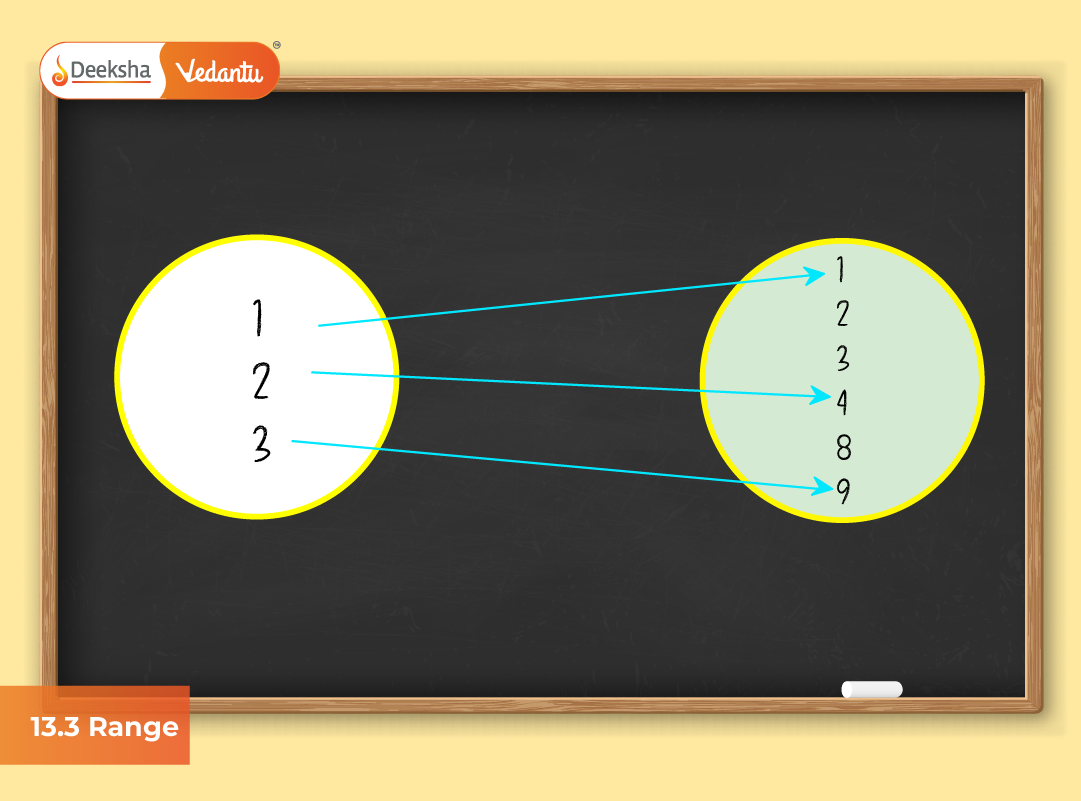
Introduction
In Statistics, the concept of Range plays a crucial role in understanding how widely data values are spread. It serves as the most basic measure of dispersion, allowing us to quantify how much variability exists in a dataset. By comparing the highest and lowest values, Range gives an immediate idea of the spread or consistency within the data. Although it is simple to calculate, Range provides an essential first step before moving on to more complex measures like Mean Deviation and Standard Deviation.
In this section, we’ll explore the definition, formula, significance, examples, and JEE-based applications of Range in detail. We’ll also discuss its advantages, limitations, and practical relevance in real-life and academic contexts.
Understanding Range
The Range of a dataset is defined as the numerical difference between the maximum and minimum values present in that dataset. It provides a quick measure of how scattered the data is.
Range = Maximum Value − Minimum Value
The Range gives us a “snapshot” of variability. A smaller range implies that the data points are close to each other (more consistent), while a larger range suggests higher variability or fluctuation.
Example:
If the marks scored by five students in a test are 45, 60, 75, 80, and 90, then:
Range = 90 − 45 = 45
This shows that the scores vary by 45 marks — an indication of moderate variation among students.
Why Range Matters
Understanding Range helps in comparing data sets. For instance, when evaluating performances or analyzing market fluctuations, the Range shows which scenario has greater inconsistency or risk.
Characteristics of Range
- Simplicity: Range is the easiest and quickest measure of dispersion to compute.
- Dependence on Extreme Values: It heavily relies on the largest and smallest data points, which can distort the result if outliers are present.
- Instant Measure of Variability: It provides a first look at the spread of the data.
- Not Suitable for All Distributions: In skewed or irregular data sets, Range might not represent overall variability accurately.
Step-by-Step Calculation
To calculate the Range, follow these steps:
- Arrange the data in ascending order (optional but helpful for clarity).
- Identify the maximum (largest) and minimum (smallest) values.
- Subtract the minimum value from the maximum value.
- The result is the Range.
Example:
The heights (in cm) of students are 140, 150, 160, 170, and 180.
Range = 180 − 140 = 40
Thus, the range of heights is 40 cm, showing the total variability among students’ heights.
Example from NCERT – Batsmen Comparison
Let’s analyze an example from the NCERT textbook that compares two batsmen, A and B, based on their scores in 10 innings.
| Innings | Batsman A | Batsman B |
| 1 | 35 | 25 |
| 2 | 50 | 50 |
| 3 | 40 | 45 |
| 4 | 60 | 60 |
| 5 | 55 | 35 |
| 6 | 30 | 40 |
| 7 | 75 | 55 |
| 8 | 20 | 65 |
| 9 | 65 | 70 |
| 10 | 80 | 30 |
For Batsman A:
Maximum = 80, Minimum = 20 → Range = 80 − 20 = 60
For Batsman B:
Maximum = 70, Minimum = 25 → Range = 70 − 25 = 45
Interpretation:
Batsman A’s scores vary by 60 runs, while B’s scores vary by 45 runs. This means A’s performance is more inconsistent compared to B, who is more stable. Hence, Batsman B is the more reliable player despite potentially having a similar average score.
Limitations of Range
While Range is quick and easy to calculate, it has certain drawbacks:
- Ignores Intermediate Values: It only considers the two extreme data points, ignoring all others.
- Sensitive to Outliers: A single extreme value can greatly affect the result.
- Not Reliable for Large Data Sets: For large datasets or those with irregular distribution, Range provides limited insight.
- Cannot Reflect Distribution Shape: It doesn’t indicate whether values are clustered or evenly spread.
Importance of Range in JEE
For JEE aspirants, the Range forms the foundation of statistical understanding. Mastering it helps in solving problems related to data comparison, error analysis, and variability. In advanced JEE problems, Range acts as a stepping stone toward concepts like Standard Deviation, Variance, and Mean Deviation.
A good grasp of Range aids in interpreting data consistency — a skill that comes in handy for questions involving experiment-based or tabular data in Physics, Chemistry, and Mathematics.
JEE-Based Example 1
Find the range of the data: 3, 8, 10, 15, 22, 25.
Solution:
Maximum = 25, Minimum = 3
Range = 25 − 3 = 22
Interpretation: The data varies by 22 units, showing moderate spread.
JEE-Based Example 2
The ages (in years) of 8 employees in a company are: 22, 24, 27, 30, 34, 35, 40, 41. Find the range.
Solution:
Maximum = 41, Minimum = 22
Range = 41 − 22 = 19
Hence, the variability in age is 19 years, showing that the workforce is age-consistent.
JEE-Based Example 3
Two classes have the following marks distribution:
- Class A: 12, 18, 20, 22, 25
- Class B: 8, 12, 15, 40, 45
Which class shows more consistency?
Solution:
Class A: Range = 25 − 12 = 13
Class B: Range = 45 − 8 = 37
Class A’s smaller range indicates greater consistency. Class B’s higher range implies greater variation among scores.
JEE-Based Example 4 (Advanced)
The monthly temperatures (°C) of two cities are as follows:
- City X: 20, 21, 22, 23, 24, 25, 26, 27, 28, 29, 30, 31
- City Y: 10, 15, 25, 30, 35, 40, 45, 20, 25, 30, 35, 40
Range of City X = 31 − 20 = 11
Range of City Y = 45 − 10 = 35
City Y experiences more climatic variation, while City X has a stable climate — a classic example of how range describes environmental data.
Comparison of Range with Other Measures of Dispersion
| Measure | Formula | Advantages | Disadvantages |
| Range | Max − Min | Quick and simple | Affected by outliers |
| Mean Deviation | Average of deviations from mean | Uses all data points | Slightly complex calculation |
| Standard Deviation | Root mean square of deviations | Highly accurate | Lengthy computation |
Range serves as the first-level check for variation, whereas Mean and Standard Deviation provide a deeper understanding of how the data values differ.
Applications of Range
- In Quality Control: To determine consistency in production processes.
- In Weather Forecasting: To analyze daily or seasonal temperature variations.
- In Finance: To measure volatility of stock prices or market fluctuations.
- In Sports Analytics: To compare player performances or team score variability.
- In Research and Surveys: To understand the spread in experimental data.
Common Mistakes to Avoid
- Forgetting to use consistent units when calculating Range.
- Ignoring extreme values that may influence results.
- Confusing Range with other measures like variance or deviation.
- Not specifying what the Range represents (e.g., cm, marks, seconds, etc.).
Real-Life Analogy
Consider two students:
- Student A: 70, 72, 73, 74, 75
- Student B: 50, 60, 70, 80, 90
Even though both might have similar average marks, A’s performance is more stable. Student B’s marks fluctuate widely. Here, Range = 75 − 70 = 5 for A, and Range = 90 − 50 = 40 for B. The smaller the range, the greater the consistency.
Similarly, Range is used in industries to monitor production efficiency — for example, if the size of manufactured bolts varies too widely, it signals inconsistency in the process.
FAQs
Q1. What is the formula for Range?
Range = Maximum Value − Minimum Value.
Q2. Why is Range considered the simplest measure of dispersion?
It’s simple because only two values — the largest and smallest — are required, and the computation involves just one subtraction.
Q3. What are the limitations of using Range?
It ignores intermediate data points and is highly sensitive to outliers, making it unsuitable for datasets with large fluctuations.
Q4. How is Range used in real-world scenarios?
It is applied in fields like weather forecasting, sports, and finance to study variability — for instance, daily temperature differences or fluctuations in stock prices.
Q5. Can Range be zero?
Yes. If all values in the dataset are the same, both the maximum and minimum values will be identical, leading to a range of zero.
Q6. How is Range different from Standard Deviation?
Range only measures the overall spread, while Standard Deviation quantifies the average deviation of each value from the mean.
Conclusion
Range, while simple, is a vital statistical concept that gives an immediate sense of variation. It helps quickly compare datasets and serves as a foundation for advanced topics like Mean Deviation, Variance, and Standard Deviation. Though it has its limitations, Range’s simplicity makes it an indispensable first tool for analyzing data in both academics and practical applications. For JEE aspirants, mastering Range ensures a strong base for tackling deeper problems in data interpretation and mathematical statistics.






Get Social